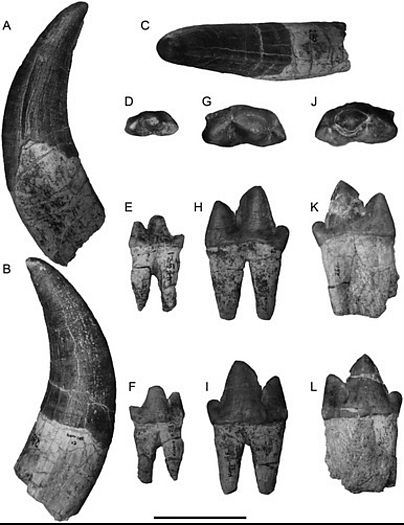Simbakubwa kutokaafrika had a skull the length of a rhino’s and canines the size of bananas.
A new species of meat-eating mammal, larger than a polar bear, has been discovered after researchers stumbled on bones kept hidden for decades in a drawer in a Kenyan museum.
The new species, called Simbakubwa kutokaafrika, roamed Africa 20 million years ago. It weighed about 3,000 pounds (1360 kilos), had a skull the length of a rhino’s and canines the size of bananas, according to the results of the study published on Thursday in the Journal of Vertebrate Paleontology.
Its fossil was unearthed decades ago in Kenya by researchers searching for evidence of ancient apes. But it was promptly stored in a drawer at the National Museums of Kenya and not given much attention.
Matt Borths from the Department of Biomedical Sciences at Ohio University visited the museum and opened the drawer.
"We saw a row of gigantic meat-eating teeth, clearly belonging to a species new to science," he said in a statement.
'Fascinating time in biological history'
Although its name means "big African lion" in Swahili, research conducted on the fossil concluded that the creature belonged to an extinct group of mammals called hyaenodonts.
Hyaenodonts were the first mammalian carnivores in Africa and for about 45 million years after the extinction of the non-avian dinosaurs, they were the apex predators in Africa.
"The most striking feature of Simbakubwa is the size of the specimen. Based on its massive dentition, the animal was significantly larger than any modern African terrestrial carnivore," Bohrs and his co-author Nancy Stevens, also from Ohio University, wrote in the study.
But as Africa and northern continents got progressively closer together thanks to the tectonic movements of Earth's plates, fauna and flora started to emigrate between the two landmasses. Around the time of the Simbakubwa kutokaafrika, the relatives of cats, hyenas, and dogs began to arrive in Africa from Eurasia and hyaenodonts became progressively more rare until eventual extinction.
"It's a fascinating time in biological history," Borths said. "Lineages that had never encountered each other begin to appear together in the fossil record."
"We don't know exactly what drove hyaenodonts to extinction, but ecosystems were changing quickly as the global climate became drier. The gigantic relatives of Simbakubwa were among the last hyaenodonts on the planet," Borths added.












